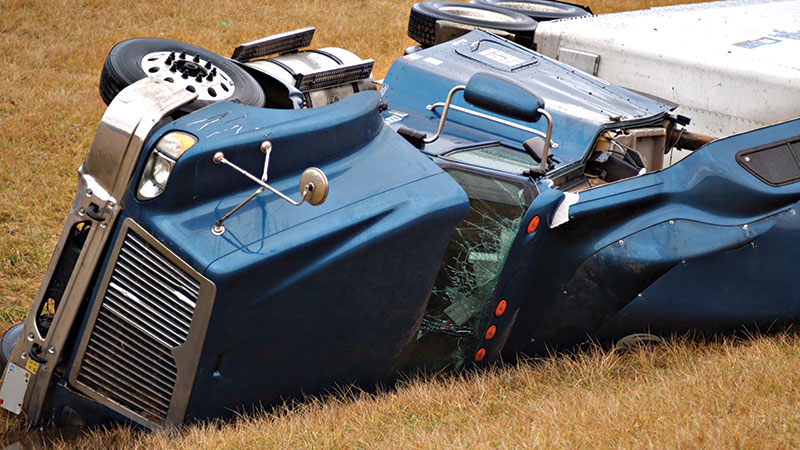You work hard to build and maintain your business. That’s why it’s important to protect yourself from potential losses, especially when they’re avoidable.
Almost any fleet operator knows the feeling of receiving that phone call – one of your company’s vehicles has been involved in a collision. Even before finding out what happened or who is at fault, employees at every level of your company need to know what to do.
Before an incident occurs:
Claims management starts before a claim occurs, and can continue long after the vehicles are repaired and back on the road.
• You should be familiar with the legal reporting requirements in the areas in which you operate.
• Properly screening or ‘qualifying’ drivers and documenting the process means that even if they make a mistake that leads to a collision, you can demonstrate the due diligence that a driver was capable of doing their job.
• Collision reporting forms, kits, or mobile apps should be kept and used when an incident occurs.
• These give the basic steps to follow, and allow the collection of necessary information
• Collision claims are manageable with proper preparation, execution and follow-ups.
When an incident or collision occurs:
Drivers and related staff need to know what to do at the scene of a collision – following the instructions on a collision report is only part of this. These staff members should receive specific training in collision scene procedures, which can include the following:
• Identify any injuries and call for medical assistance if necessary.
• Report the incident to the police.
• Secure the scene – if vehicles can be safely moved in minor incidents, move them off the road. If not, use flares and reflectors to warn other traffic, and if necessary, someone should direct traffic away from the scene until the authorities arrive.
• Exchange licence, registration and insurance information with other involved drivers.
• Take pictures – do not take pictures of any people involved in the collision, but take pictures of damage to vehicles, damage or markings on the road, and if possible, take pictures of the scene from several hundred yards away, from multiple directions, and while gradually approaching the scene.
• Complete the collision report and draw a map of the scene.
• Do not admit fault or make any statement regarding what happened to anyone – if possible, discuss the incident with the company prior to making a statement to the police
After the incident:
Depending on the sophistication of claims or safety management and the nature of the incident, your company may deal with the incident initially.
• If there’s any possibility of a third-party injury, the insurer should be notified immediately so an adjuster can attend the scene, if possible.
• Unless you’re authorized to make external comments on behalf of your company, don’t speak to the press.
• Consider getting legal advice before making a public statement.
• Not only is the driver responsible when a collision occurs, but so are the staff members who handle incident reports.
• Health and safety staff, mechanics, warehouse staff, or contractors who deal with cargo recovery should know their roles.
The incident review process:
Depending on the province, state, or jurisdiction in which the incident occurred, the legal environment can be very different. Working with your insurer and possibly legal counsel may be necessary. A structured review process should be in place and include:
• collecting all available data to determine what happened;
• what preventative actions, if any, could have been done;
• what the company’s losses are expected to be; and
• discuss findings with your insurers.
Collision review and the driver
A documented process to determine what (if anything) could have been done differently to avoid the collision should be in place. This process may include:
• a collision review committee;
• review of the driver’s skills and possible deficiencies and any possible solution including re-training;
• if the driver is clearly not responsible, it’s good practice to re-assess the driver’s abilities;
• review of company policies, processes, and environmental exposures to determine any additional factors;
• maintain collision data on all incidents to track possible trends; and
• even smaller fleets, which may not have a large enough pool of data, can keep an eye on costs, or particular regions and routes where problems occur.
Summary
Many fleet operators dread the prospect of dealing with a collision. Proper preparation, processes and analyses will never make the experience pleasant, but can make it constructive. The goal of a sound vehicle incident reporting system is to continuously improve customer service, fleet efficiency and health and safety. Also – it is just good business!
For further information on this topic, please contact your independent insurance broker.



